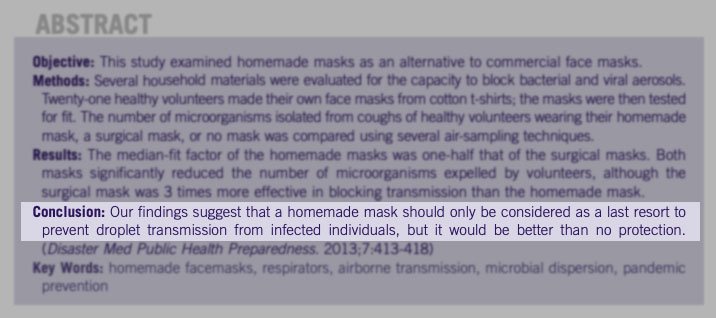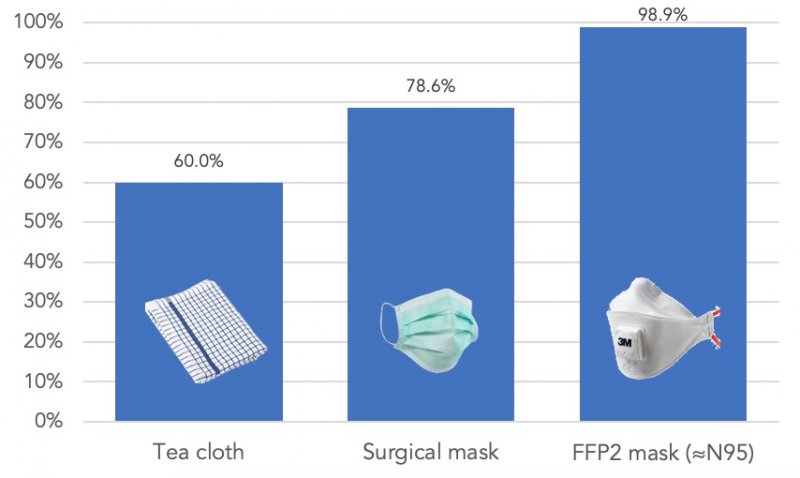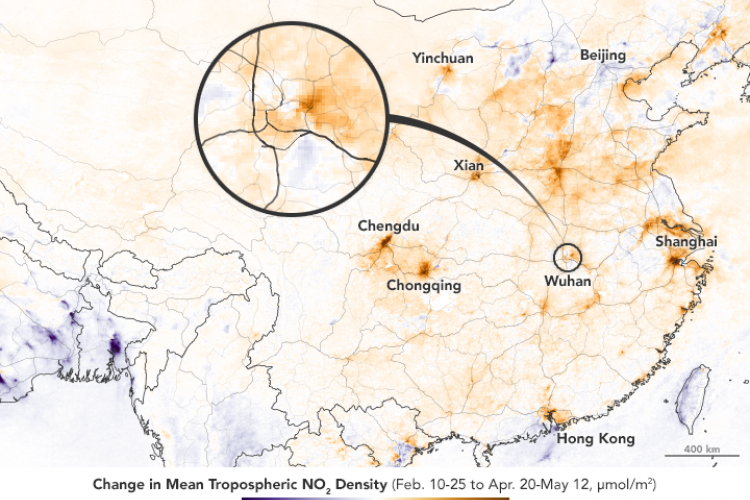Can DIY Homemade Masks Protect Us From Coronavirus?
This post comes courtesy of Smart Air, a social enterprise and registered B-Corp dedicated to helping people in China breathe clean air without shelling out thousands of dollars for expensive purifiers.
DIYing your own air pollution mask to protect against viruses sounds like a crazy idea. Data shows masks work incredibly well, and they’re also really cheap. A surgical mask costs just a few cents, and it’s capable of filtering out 80 percent of particles down to 0.007 microns (14 times smaller than the coronavirus).
However, the coronavirus (COVID-19) outbreak brought with it a new problem: masks are all sold out.
People have scrambled to make their own masks, but can homemade masks really protect you from the coronavirus? Smart Air has analyzed the data to give you the answer.
The homemade DIY mask test
Scientists from the University of Cambridge asked this exact question in the aftermath of the 2009 H1N1 flu pandemic. They thought that in a global pandemic scenario, we might run out of N95 masks. Their predictions have come true during the coronavirus outbreak.
The researchers asked volunteers to make their own masks using cotton t-shirts and a sewing machine, using a simple protocol they’d devised. They then compared their effectiveness with surgical masks at filtering particles as small as 0.65 microns.

The homemade cotton masks captured 71 percent of 0.65-1.1 micron particles, compared with 86 percent for the surgical mask. Although the surgical masks captured 15 percent more particles, the cotton masks did surprisingly well. The researchers concluded that homemade masks would be better than nothing.

What about smaller-sized particles?
The Cambridge data shows that homemade masks can filter out some particles that are 0.65-1.1 microns in size. That’s pretty good, however, most viruses are smaller than this, and the coronavirus is 0.1 microns. A group of researchers in the Netherlands tested homemade masks made from a tea cloth for smaller particles, that are more similar in size to viruses.

They tested what percentage of particles the masks could capture for even smaller particles than the Cambridge researchers: from 0.02 to 1 micron. They used a fit-test machine to test the masks while people were actually wearing them.
The tea cloth mask captured 60 percent of the even smaller, 0.02-1 micron particles. Not surprisingly, the surgical mask and N95 mask captured more particles, but the data shows that a homemade mask was far from useless at capturing virus-sized particles.

How long can you wear DIY masks for?
They then tested the masks’ effectiveness after people had worn them for three hours. The results showed that moisture and time had very little impact on effectiveness for any of the masks.

In fact, the homemade masks actually got 5.8 percent more effective at filtering virus-sized particles after three hours. From this, we can conclude that wearing homemade masks for several hours won’t reduce their effectiveness.
How well do homemade masks work for children?
Next, they tested homemade masks with 11 children aged five to 11 years old. When kids wore the homemade masks, they removed just 52 percent of the 0.02-1 micron particles. That’s almost 15 percent less effective on kids than on adults.
Interestingly, the surgical masks and FFP2 (N92) masks also did worse on children. This fits with a Smart Air test of children’s masks in India that found lower effectiveness on children than adults. The data suggests that it is harder to fit masks on children’s faces.
The bottom line
Data shows that homemade masks made with a single layer of cotton clothing, or a tea towel can remove around 50-60 percent of virus-sized particles. This means they perform worse than surgical masks and FFP2 (N95) masks. Wearing the homemade masks for three hours had no significant effect on the filtration efficiency.
DIY masks also work for children, however, they are less effective on kids than they are on adults.
READ: Can Air Purifiers Protect us From the Coronavirus?
This post originally appeared on the Smart Air WeChat official account.
Images courtesy of Smart Air







